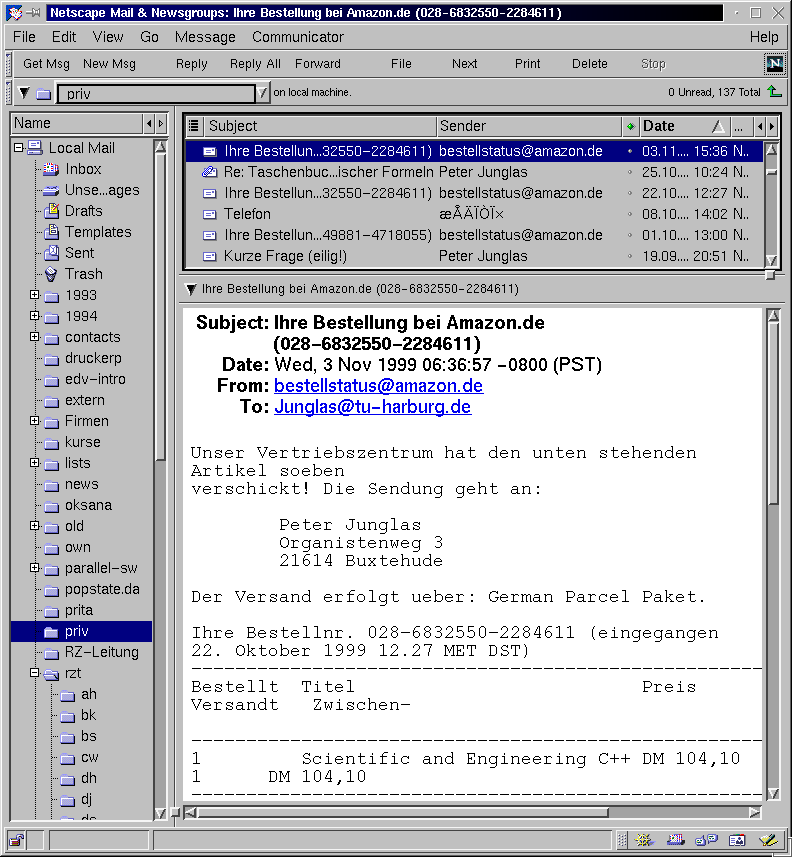Email, i.e. electronic mail, is one of the oldest and most important
internet services.

- An email consists of the content and a Header with additional
information. This header consists of several lines, each beginning with a
special keyword.

-
| key |
meaning |
| To: |
address |
| From: |
sender |
| Reply-To: |
adress to answer to (can be different fronm sender) |
| Subject: |
short line describing the context |
| Date: |
sending time |

- Important part of an email is the address. It has the following form:
NAME@DOMAINNAME
NAME refers to the receiver personally, DOMAINNAME to the
computer that receives the message.

- peter@peter-junglas.de
-

- The To: field of a mail can contain several addresses, separated by a
comma.
Mailing list: special address that refers to a group of people. Each
mail send to a mailing list, is copied to all members. Mailing lists are
created by the mail administrator (postmaster) of a site.
-

- A mailing list is a (private) forum of discussion. There exist may open
lists, where everybody can subscribe by simply sending a special message.
-

- There is no world wide email phone book. At least one can find the addresses
of people, who send mail or write news article, in the header. Email
addresses of university employees can usually be found via the homepage of
the university or institute.

- The content of an email could simply be an ASCII text. Mails containing
other formats (e.g. texts with diacritics, HTML texts or images) are tagged
with the corresponding MIME type. Furthermore one can
append arbitrary files to a mail (attachments).
-

- Many people append their address (including phone number or URL of their
home page) explicitely to each mail (signature).

- One can send a copy of a mail to other people, using the header field
CC: (Carbon Copy).
-

- All receivers of a mail can see the complete To and CC lists.

- The header field BCC: (Blind Carbon Copy) works like CC,
with the difference, that the ordinary receivers can't see the BCC list.
-

- Many domains have a special mail server that is permanently connected to the
internet. This guarantees that incoming mails are stored automatically. The
receivers fetch their mails from the server.

- Two different methods are in use to transport mails vom the server to the
receiver:
- POP
- Mails are copied to the computer of the receiver and (generally) removed
from the server.
- IMAP
- Mails remain on the server and can be organized there .
-

- Lots of programs exist which ease the sending, receiving and organizing of
mails, supplying lots of extra functions.

- Some important functions of mailing programs:
- storing mails in folders (directories)
- management of addresses
- Reply function: send a mail to the sender of a given mail
- Forward function: send a received mail to someone else
-
-

-

- Generally mails are open to attack: sender, receiver and content of a mail
can be read or changed. Special methods have been developed, which
guarantee the identity of the sender and the correctness of the
content. They are based on cryptophic methods.




Peter Junglas 8.3.2000

![]()